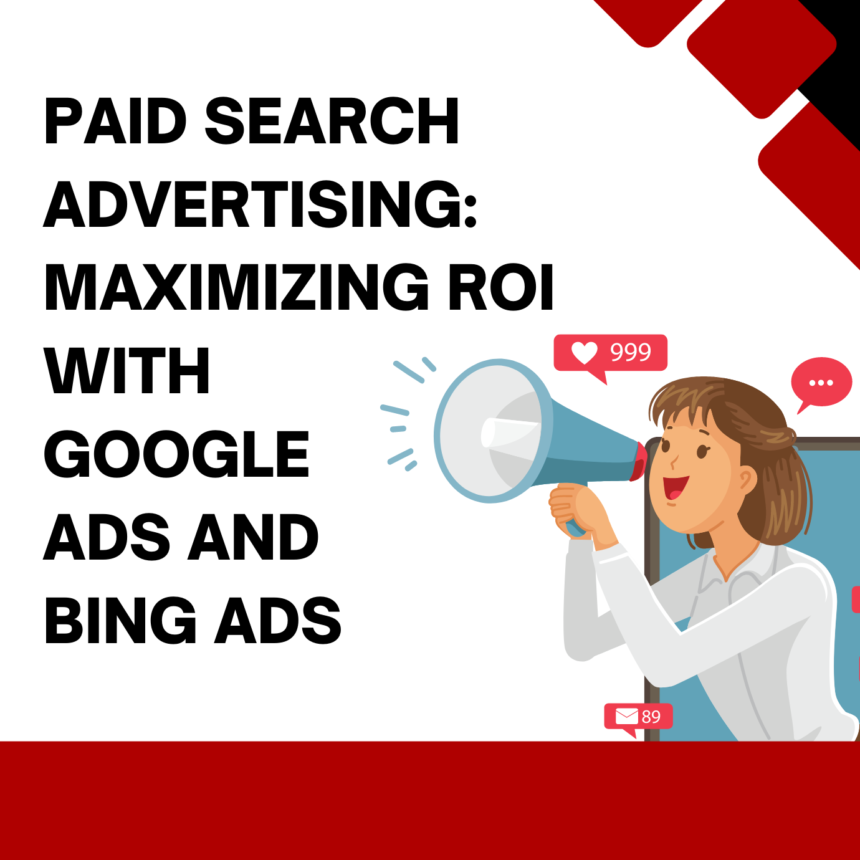Paid search advertising, also known as search engine marketing (SEM), is an effective way to drive targeted traffic to your website and maximize return on investment (ROI). Google Ads and Bing Ads are popular platforms for running paid search campaigns. Here are some strategies to help you maximize your ROI with these platforms:
1. Set Clear Goals: Start by defining clear goals for your paid search campaigns. Whether it’s increasing website traffic, generating leads, or driving sales, having specific and measurable goals will guide your campaign strategy and help you track and evaluate success.
2. Conduct Keyword Research: Thorough keyword research is crucial for paid search success. Identify relevant keywords and phrases that your target audience is likely to search for. Use keyword research tools to explore search volume, competition, and related terms. Optimize your keyword selection to strike the right balance between relevance and competition.
3. Create Compelling Ad Copy: Craft compelling ad copy that captures attention, highlights your unique selling points, and encourages click-throughs. Use relevant keywords in your ad headlines and descriptions to improve relevance and increase ad visibility. Experiment with different ad variations to find the most effective messaging and calls-to-action.
4. Optimize Landing Pages: Ensure that your landing pages align with your ad messaging and provide a seamless user experience. Optimize landing pages for fast loading times, clear and persuasive content, and prominent calls-to-action. A well-designed and user-friendly landing page can improve conversion rates and maximize ROI.
5. Utilize Ad Extensions: Ad extensions expand the visibility and functionality of your ads. Take advantage of various ad extensions such as site links, call extensions, location extensions, and review extensions. These extensions provide additional information to users, increase ad real estate, and improve ad performance.
6. Implement Conversion Tracking: Install conversion tracking codes on your website to measure and track conversions accurately. Conversion tracking allows you to analyze the performance of your ads, identify high-performing keywords and campaigns, and optimize your budget allocation for maximum ROI.
7. Use Audience Targeting: Both Google Ads and Bing Ads offer audience targeting options that allow you to reach specific segments of users based on their demographics, interests, and behaviors. Utilize these targeting options to refine your audience and deliver tailored ads to users who are more likely to convert.
8. Monitor and Optimize Performance: Regularly monitor the performance of your paid search campaigns and make data-driven optimizations. Analyze key metrics such as click-through rates (CTR), conversion rates, cost per acquisition (CPA), and return on ad spend (ROAS). Adjust your bids, keywords, ad copy, and targeting based on performance insights to improve campaign effectiveness and ROI.
9. Test and Experiment: Continuously test and experiment with different campaign elements. Test different ad variations, landing page designs, bidding strategies, and targeting options to identify the most effective combinations. Conduct A/B tests to compare performance and make data-informed decisions for optimization.
10. Budget Optimization: Monitor and optimize your budget allocation based on the performance of your campaigns. Identify high-performing keywords and campaigns and allocate more budget to maximize their impact. Regularly review your budget distribution to ensure it aligns with your goals and delivers the best ROI.
By implementing these strategies, you can maximize your ROI with Google Ads and Bing Ads. Continuously monitor performance, refine your campaigns, and adapt to changing market dynamics to achieve optimal results from your paid search advertising efforts.
